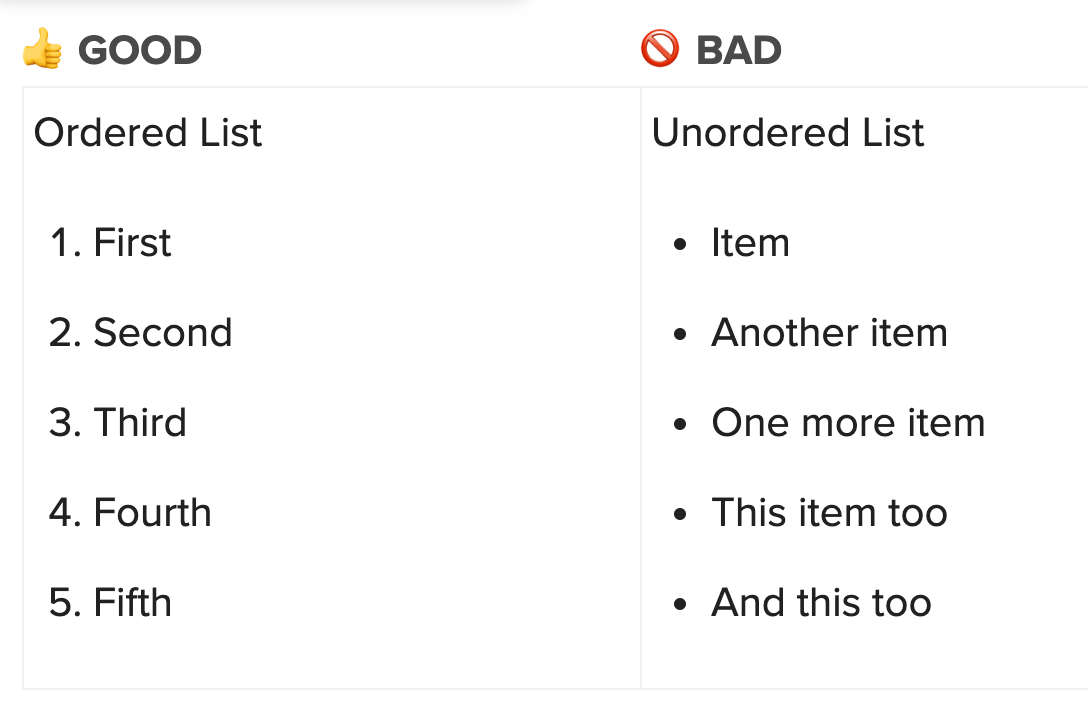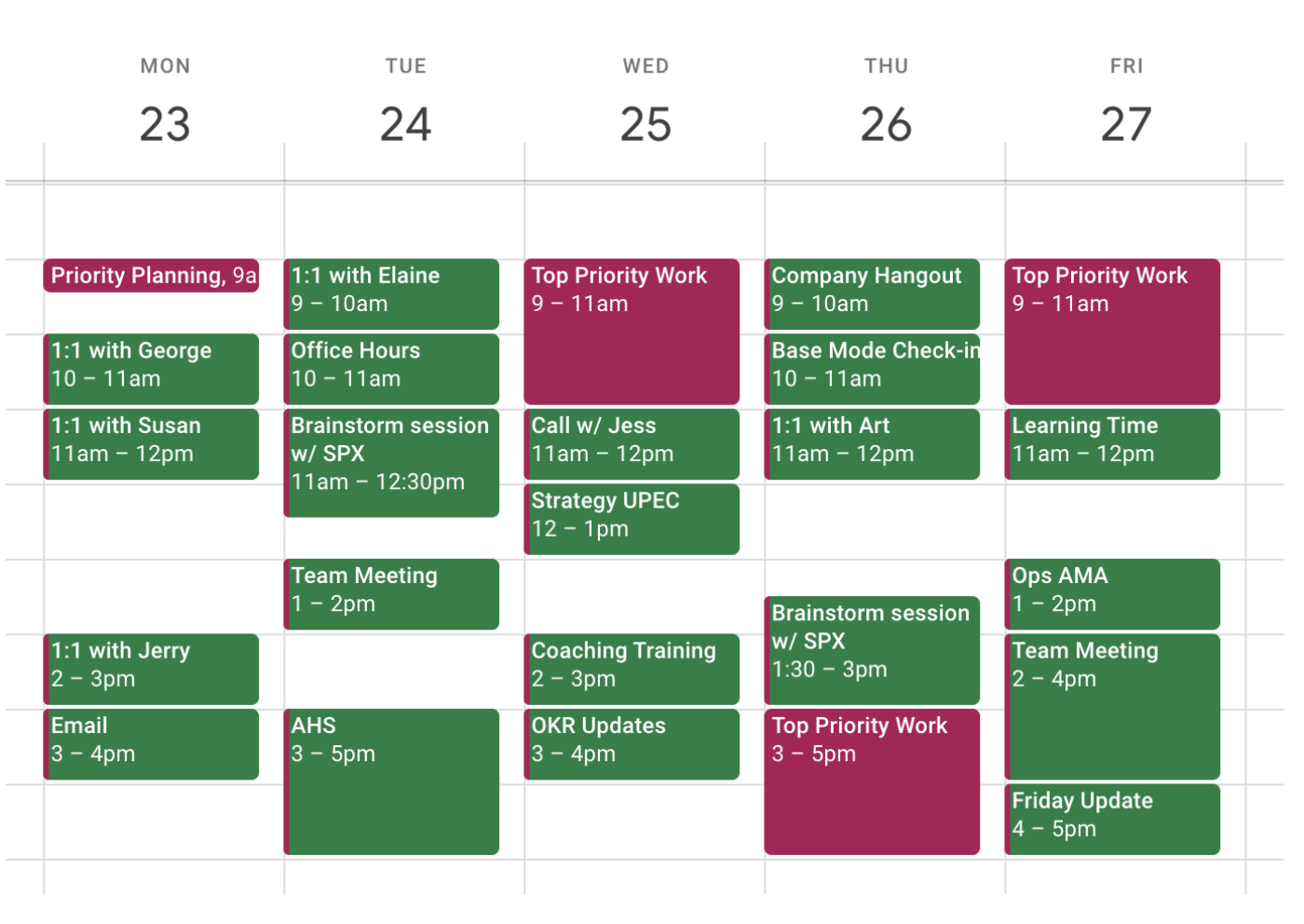Highly productive people don't get more done in less time. Instead, they focus their attention on the things that really matter: the things that are meaningful, contribute high value, and result in the highest impact. That should sound familiar—it's called prioritization.
It seems obvious, but without a clear sense of priority, most of us will let our attention wander to less important tasks. We react instead of respond. We check things off our task list, but the results are minimal. In fact, one study found that the average employee wastes up to 41 percent of their time at work on low-value tasks.
I'm on the Learning and Development team at Zapier, and here I'll share some of the tips we give to Zapier employees about how to build and strengthen prioritization muscles.
Our team has reviewed a number of resources, listed at the bottom of the article, to compile these suggestions for how to prioritize your work.
1. Take back your power of choice
Imagine walking into a car showroom with a wad of cash, an aggressive salesperson, and no idea what type of car you want. Will you end up with the car that's best for you, or the car the salesperson wants you to buy?
Without a plan to anchor your decision-making, you're just reacting to tasks that other people put on your plate. You're letting other people—your manager, your colleagues, your friends—choose for you.
If you don't choose your priorities, someone else will. Commit to choosing how to spend your energy and time every week and every day. Every time you say "I have to _____," decide if it's still an accurate statement if you change it to "I choose to _____." According to Greg McKeown, author of Essentialism, "using this language reminds us that we are making choices, which enables us to make a different choice."
2. Narrow your focus
Making your own choices gives you the opportunity to do your best work. But you can't do your best work on everything. Highly productive people know that only a few things really matter. They do less, better. They are able to "discern the vital few from the trivial many."
That means you need to ruthlessly prioritize your most important work on a regular basis. Say no to the rest. This isn't easy, or we'd do it all the time. Prioritizing means grappling with real trade-offs and making tough decisions. It means saying no to a lot of interesting work.
At the start of every week and day, ask yourself: "What is the most important thing I should be doing?"
To decide what's most important, consider:
Is this the right thing for me? i.e., Can I uniquely provide value?
Is it the right time to do this? i.e., Does it need to happen now?
Am I doing it for the right reasons? i.e., Am I making an enthusiastic choice?
Which items, if I do them first, make other items easier or unnecessary?
What can I do today to unblock problems to achieve my team's objectives?
If you're still uncertain, then ask others. Your peers and managers can help.
3. Put your most important work in an ordered list
A list of five or six priorities doesn't help you decide what to work on Tuesday morning at 9 a.m. Is item #2 best? Or maybe you should make progress on #4?
Your most important work should take the form of a list, in order, from most important to least important.
In fact, we only recently started using the plural form of the word "priority."
The word priority came into the English language in the 1400s. It was singular. It meant the very first or prior thing. It stayed singular for the next five hundred years. Only in the 1900s did we pluralize the term and start talking about priorities. – Essentialism by Greg McKeown
Priority means we have one thing that is most important. It can't, by definition, mean that we have multiple most important things. So, to make sure one priority is most important, make an ordered priority list.

Ranked priority is a key aspect of the Agile method of prioritization, which is a great system to use if you're having trouble getting started. For other ideas, take a look at our blog post about how to ruthlessly prioritize.
4. Don't get distracted from your priority
It's one thing to know your priority. It's another thing to give it your full attention during the day. Distraction is your single biggest barrier to meaningful progress on your top priority.
When you sit down to work on your priority, it's not going to be easy. You'll be up against Slack notifications, open browser tabs, enticing Spotify playlists, and more. Each interruption means lost time shifting your attention to something less important. And we get interrupted a lot. One study looked at employees of high-tech companies and measured how often they got distracted. They found that people switched activities every three minutes and five seconds and that it took an average of 23 minutes to get back on task.
The fact is we live in a world designed to destroy your ability to focus. It will be a constant battle—but one worth fighting.
Create a standard distraction-free ritual you can activate every time you move into focus mode. This means building an environment for yourself that removes your most tempting distractions. Your focus ritual might include:
Closing Slack or turning off notifications
Using an extension like StayFocusd to restrict websites
Putting on noise-canceling headphones
Spinning up your favorite focus music playlist
Whatever it is, when you're headed into focus-mode, turn it on.
5. Schedule time on your calendar for your top priority
You log in to work on Tuesday morning, and your boss has two tasks waiting for you. One is asking for something that isn't important but needs to be done quickly. The other is critical but not time-sensitive. What would you most likely do in this situation?
A study published in the Journal of Consumer Research found that people will often choose urgent tasks over important ones. They call this the mere urgency effect.
Urgent tasks give us immediate gratification. A feeling of satisfaction. A task to check off the list. Important tasks, on the other hand, can be more difficult and further away from completion, which makes them inherently less appealing.
Here's the kicker: the mere urgency effect is stronger the busier we are. When we have a lot to do, we tend to focus on what we can quickly cross off our list. It helps us feel in control but doesn't help us make progress on our most important work.
To counter this, block time in advance on your calendar for work that is important but not urgent.
Block off at least two hours at a time. This helps you enter into "deep work" mode.
Give yourself at least two of these time blocks each week. More if you can pull it off.
Work on top priority items when your energy is at its peak (this is mid-morning for most people, but you can find your chronotype and schedule your productivity).
While you're at it, block off a 15-minute planning period every Monday morning. This is when you can review your priorities for the week.
Consider using Clockwise to optimize your calendar and free up blocks of uninterrupted time.

One study found that employees who blocked their time in this way reported being 14 percent more effective with their time and 12 percent more likely to accomplish more.
Prioritization is hard, but at least there are concrete things you can do to make it happen. Here's a recap of the action steps:
Take back your power of choice. Notice every time you say "I have to
_____." Replace it with "I choose to_____."Ruthlessly prioritize your most important work on a regular basis. At the start of every week and day, ask yourself: "What is the most important thing I should be doing with my time and resources this week/today?"
Make an ordered priority list, not an unordered list. Priority means we have one thing that is most important.
Resist distraction. Create a standard distraction-free ritual you can activate every time you move into focus mode.
Don't let urgent tasks steal your time. Block time in advance on your calendar for work that is important but not urgent.
Resources
Here are the resources we used when compiling these suggestions:






